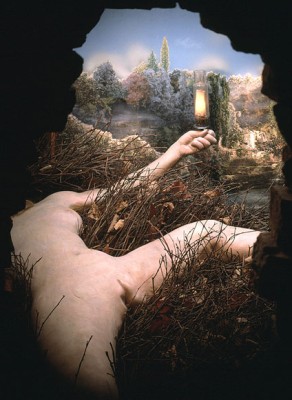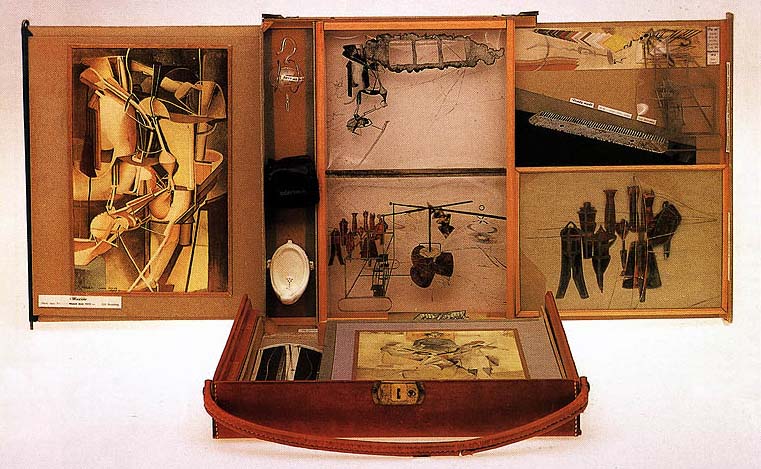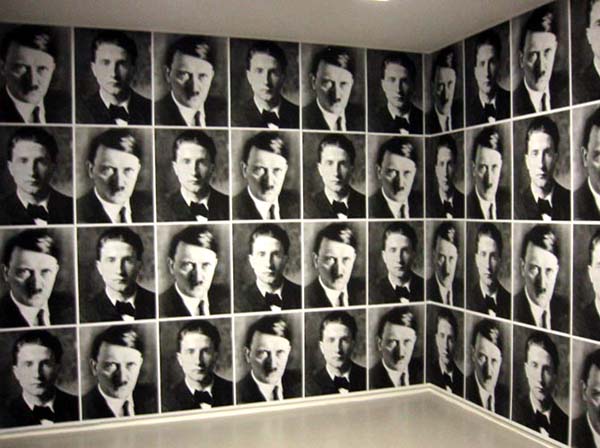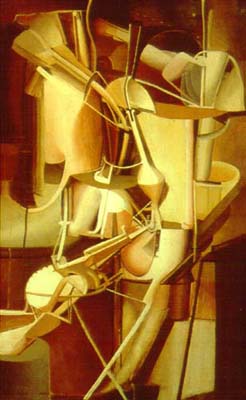Is Marcel Duchamp a terrorist? In a figurative sense, a weapon of mass destruction. The super-bomb/dirty bomb alchemical chain reaction where crap is turned into monetary gold. Clearly, with the ready-made, there was an initial anti-hierarchical space of thought, something that seemed refreshingly emancipatory and faintly democratic. The everyone is an artist and the cult of personality borrowed from Byron. The fetish object of digging up the cadaver of Wordsworth. Duchamp’s illusory qualities became hyper-hierarchical in which the kitsch and the crap developed its own pecking order. Within the present context, it recalls Thomas Frank’s Conquest of Cool and Potter and Heath’s Rebel Sell, where individualism is converted into commodity culture and the concepts of invidios comparison, status and distinction perpetually recycles itself into a wheel of consumerism; generic ready-made scenarios where aesthetics and art collide in an unholy trinity with money.
And Duchamp deserves much of the credit in innoculizing society to absorb the openly fetishistic and twisting and converting Manet’s Olympia and Courbet’s Birth of the World into ingenious perverse impulses masquerading as culture and the explicit power of the openly voyeuristic when paired with technology of mass dissemination. Its like the expression, “its not the steak its the sizzle.” If Edward Bernays could convince American women that cigarettes were “torches of freedom” intimately connected to a new sense of empowerment, liberation and fulfillment, its not hard to see Duchamp’s role as trickle down fare, like urinating on the masses from his penthouse, on popular culture and marketing.
Sexual fare, the ready-made body, man’s unquenchable thirst for new frontier and pushing the boundaries, the female body was the obvious choice of cheapest commodity and opium of the masses. But, not in the sense of a Robert Graham sculpture, more in the bizarre manifestations, de-naturized women of Michelangelo, and the homosexual nightmare of men with breasts. So, Duchamp did not oeuvre in a vacuum. But, many are called and few are chosen like Marcel. As Kuspit posited, as the postscript of modernism, Duchamp was the only one genuine terrorist in modern art, even leaving misogynists like Picasso to smell their pigments like shit. Duchamp’s readymades, said Kuspit, “perversely” undermined distinctions between non-art and art, thus permitting all manner of intellectual perversity, ” turning art into a kind of perverse theory, that is, conceptual kitsch, the most pretentious kitsch of all.”
…The work’s raison d’être was the apparent discovery that photographer Heinrich Hoffmann photographed Duchamp when he was in Munich in 1912, and later became Hitler’s official photographer. Both subjects appear to be dressed in a dark coat and tie….

---one sees, splayed out in all her naked grandeur, a young female with a somewhat exaggerated vaginal slit, its blood red suggesting that she was raped. (Or maybe Duchamp liked looking at menstrual blood, the way other men, according to the Marquis de Sade -- a Surrealist hero, as Man Ray's adulatory image of him suggests -- like looking at women squatting and urinating or defecating, sometimes into the mouths of the men. --- Read More:http://www.artnet.com/magazine/features/kuspit/kuspit6-10-02.asp
I was puzzled about the work and asked for clarification. In my short discourse I said I thought that the juxtaposition of Duchamp with Hitler was bizarre, and I suggested (tongue in cheek) that it might have been appropriate to also include a photograph of Lee Miller since Man Ray (who had become the (un)official photographer of Duchamp) also photographed Miller. Plus, Lee Miller, who reportedly bathed in Hitler’s tub, was one of the subjects of a presentation by Carol Zemel of the State University of New York, Buffalo. In her discussion of the so-called liberation photographs by Margaret Bourke-White and Miller, Zemel suggested that the two women’s photographs tended to “anesthetize and aestheticize” the Holocaust. I could not agree more and I indeed feel that Herz’s Zugzwang “anesthetizes and aestheticizes” Hitler. Read More:http://www.toutfait.com/issues/issue_2/Notes/barowitz.htmla
Kuspit:”I don’t think it’s so bizarre at all. Duchamp was a terrorist, wasn’t he? [Microphone disturbances] I just wanted to say that I don’t think it’s so bizarre at all. Duchamp was a terrorist and so was Hitler, and Duchamp was a fetish object, as Hitler is. And a lot of art historians, there are a whole group of art historians who click their intellectual heels and make the Duchamp salute these days. They are both fairly disruptive figures. I think Duchamp was an extremely disruptive influence on art, despite the rationalization of it as, quote, conceptual and so forth. So I think it is a wonderful and actually rather insightful connection to put Hitler and Duchamp together.”…”Cowards can be terrorists — the art world is a place were artists can be terrorists.”…There is a famous incident … there was a Dadaist happening in Germany and … I believe there was one of the events where one of the Dadaists went and took all the money and invited people to a lecture and didn’t give the lecture — took the money and made some mockery. They were brought into court — this is documented, okay. They were brought into court — some famous Dadaist, and they were trembling, trembling — brought into court and the judge said to them, ‘How do you explain the fact that you stole all the people’s money?’ Then he looked at them trembling and said, ‘Oh, you’re artists, you were artists. Oh, okay. Case dismissed.’” Read More:http://www.toutfait.com/issues/issue_2/Notes/barowitz.htmla

---From the years of his earliest mature works (ca. 1913-14), Duchamp maintained that he was devoted to "discrediting, the idea of the hand-made." In essence, he wanted to operate in the fashion of a machine, for he wished "to wipe out the idea of the original, which," he later explained, "exists neither in music, nor in poetry: plenty of manuscripts are sold, but they are unimportant. Even in sculpture, the artist only contributes the final millimeter; the casts and the rest of the work are done by his assistants. In painting, we still have the cult of the original." In effect, then
champ strove to eliminate the aura intrinsic to an original work of art, a position that certainly would have placed him in opposition to Benjamin, who -- as a result of its mechanical replication -- considered this particular aspect of art its most endangered feature. Read More:http://www.toutfait.com/issues/issue_1/Articles/after.html
ADDENDUM:
Kuspit:I think an anecdote reported by Hans J. Kleinschmidt affords a good deal of insight into Duchamp. In Berlin Dada, Dada Spectrum: The Dialectics of Revolt, eds. Stephen Foster and Rudolf Kuenzli , Kleinschmidt writes: “Duchamp’s influence on artists in our time is well known and extends beyond the confines of this article. But there is the amusing story Sidney Janis told me about Duchamp as the most radical Dadaist of all. He had graciously consented to help design the announcement for the 1954 Dada retrospective at the Janis Gallery. When Sidney Janis showed Duchamp the final proofs of the carefully folded sheet with every artist’s name in the proper place, Duchamp approved of the printing, said he liked it very much. He then took one copy, proceeded to crumple it completely in his hands and said to Janis: ‘This is the way you ought to mail them’.”
I think this behavior symbolizes Duchamp’s destructive attitude. Art history may call it a Dadaist gesture, but human beings recognize it as contempt. It epitomizes Duchamp’s malevolence — his pathological negativism. (I am using “negativism” in the sense that Anna Freud did in her article analyzing it. Otto Fenichel adds that in negativism “resentment against the external world finds open expression.”)
Woman is perhaps the most conspicuous target of his destructive negativism. It is subliminally evident in Nude Descending the Staircase and Bride Stripped Bare by Her Bachelors, Even, and viciously refined in L.H.O.O.Q and the Etant Donnés. In all these works she is a victim, mocked and ruined. (It is worth noting that Mark Polizzotti, in his biography of Andre Breton, describes the Dadaists as “joyful terrorists” [Breton's term]. Duchamp seems to have become an increasingly joyless one.)
As Joseph Beuys suggested in “The silence of Marcel Duchamp is overrated,” it is time to get beyond the sick Duchampian joke, all the more so because it has become a facile conceptual quip. It is especially decadent in its longwinded, scholarly Naumann version, where it looks like a petrified corpse from Pompeii, that is, like bitter shit. Read More:http://www.artnet.com/magazine/features/naumann/naumann6-15-00.asp
——————————-
“Not works of art but manifestations”: here Bürger echoes Walter Benjamin’s famous observation that “what the Dadaists . . . intended and achieved was a relentless destruction of the aura of their creations.” And the emphasis on group provocation recalls Renato Poggioli’s now classic discussion of the anti-traditionalism, agitation, and agonism that characterize the avant-garde. “We must never forget,” writes the leading Duchamp scholar Michel Sanouillet, “that Dada was a group of people closely knit together, a bund, whose purposes were identical, and who had banded together their talents and energies to wage an excruciating war against society as a whole. That is why we find constant references, in the members’s own writings, to Dada as a collective being.” Read More:http://epc.buffalo.edu/authors/perloff/dada.html
—————————-
A banality of evil. Some of the theorizing of Duchamp, the canonizing and postulations regarding his work, does bear some semblance of the verbal gymnastics of a Heidegger that in the final analysis was an affirmation of nazi dosctrine, to which he contributed to its crafting and ultimate implementation through complicity.










 COMMENTS
COMMENTS



